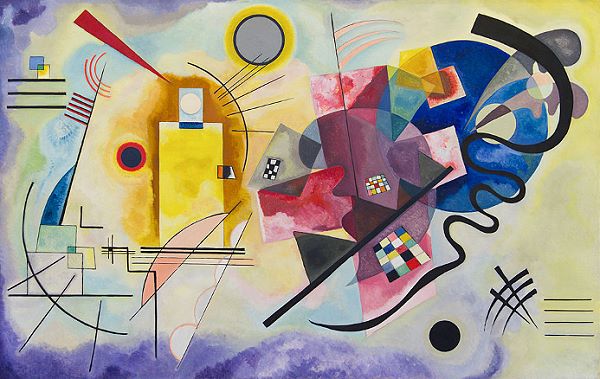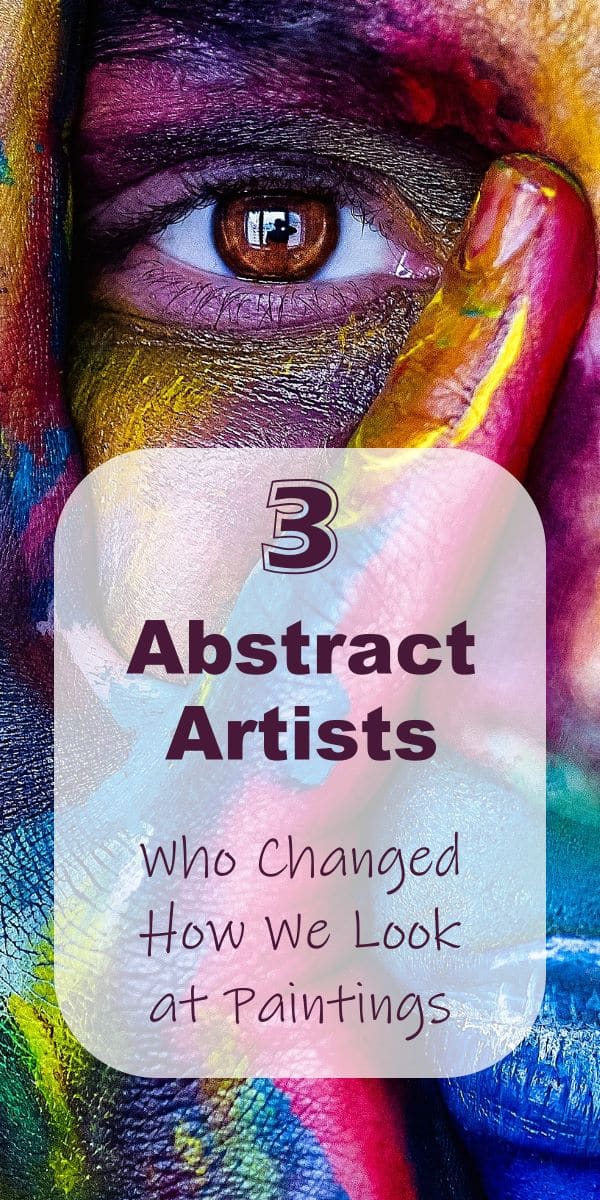
I am Diane Detalle, a professional in the finance industry who has taken a complete shift in careers to take on the challenges of the art world. Working as an abstract artist in this day and age, it only seems apt that I discuss some of the visionaries who have defined the practice and helped to develop it into what it has become today. These are some of the artists who have heavily inspired my practice as well as of many others. To start talking about them, I will make a mention of one of the most renowned abstract artists – Arshile Gorky:
Abstraction allows man to see with his mind what he cannot see physically with his eyes.
As one of the top influencers of abstract expressionism, Arshile Gorky aptly described the potential of abstract art for everybody. Since before history can remember, we have relied on visionaries to open up hidden doors that remain elusive to most of us so we can catch a glimpse of the world we could not possibly comprehend exists.
Vision is the key factor that abstract artists capitalized on in order to satiate the senses, confuse them, excite them and ultimately expand on the humanity’s ability to perceive the world around it. Today, abstract painting is seen as one of the most prominent aspects of the art movement that we live in. Many forward-thinking artists from the previous century sprung up such a pivotal point in art history that led to the birth of art as we see it today.
Abstract art is the reason contemporary art is as diverse as it is today. Back in the 20th century, the daring few artists who came to be known as propagators of abstract art rejected the “rules” which defined the world of art. They chose to move away from the traditional practice despite strong suggestions not to deviate.
Instead of focusing on the aspects of representational visuals, figurative works of art and other “typical” aspects of art, they chose to digress. The compositions, color and emotions became the focus of their drive to create the work that they did. While “complete” works of art were still relevant in their endeavors, most of them gave more importance to the process than the finished work in front of them.
The visionaries that created these abstract images and allowed us to change the way we perceive art and the world around us essentially gave us a gift. We’re going to take a look at some of the pioneering abstract artists so we know whom to thank for introducing us to the new way of seeing art.
Abstract Artists that Changed the Way we look at Paintings
One key thing to remember is that many people may or may not approve of some of the entries on this list. That is alright. Here are the artists who I feel deserve to be known as pioneers of abstract art and contemporary art as we know it today.
Wassily Kandinsky

Historically considered to be a key and predominant pioneer in the world of abstract art, Russian abstract artist Wassily Kandinsky is one of the most celebrated artists of the modern art world. The influence of Kandinsky’s work on many of the contemporary artists can be seen very clearly. A practice in abstract art that was driven by “inner necessity” dictated Kandinsky’s works of art.
This concept of inner necessity called for artists to become blind to the aspects of both recognized and unrecognized form; to stop listening to the teachings and desires of the art world at the time. Out of this avant-garde manner of producing visual art, Kandinsky created works like the Jaune Rouge Bleu. The compositions transcended figurative forms and representationalism to make way for vibrant colors, geometric shapes and floating lines.
Piet Mondrian

The leading abstract artist of what became known as the De Stijl Movement, Piet Mondrian was one of the defining artists in abstract art. The Dutch artist pioneered the De Stijl Movement, which is also called neoplasticism. The movement focused on the gradual simplification of the form and tone with Mondrian’s work focusing on two primal aspects – primary colors and lines.
The iconic Tableau I and the Composition A were the result of this abstract artist solidifying his newfound voice in the realm of visual arts. The definitive Mondrian-esque style saw compositions in oil paintings consisting of nothing more than solid colors compartmentalized and divided by solid black lines. These compositions offered viewers a chance to look at mathematical precision and purified geometry come to life.
The works of art that this abstract artist produced brought about a style of painting that would go on to usher in a new generation of sculptors, painters, designers and architects. The influence of Piet Mondrian was so prominent, in fact, that it still continues to inspire creative individuals from all fields to this day.
Jackson Pollock

A person infamous for being neurotic and an alcoholic, the contributions of Jackson Pollock that led to the rise of abstract expressionism cannot be emphasized enough. This list would not be complete without the mention of the most successful and influential abstract expressionist.
Abstract expressionism is a post-war art movement, which focused on spontaneity in the creation of art. Characterized by gestural paint application and compositions full of energy, Pollock’s work was inspired by psychoanalyses to reach places within his subconscious to create compositions – the likes of which the world had never seen before.
One of Jackson Pollock’s first drip paintings, the Full Fathom Five changed the world of abstract art forever. The visionary drip technique that he created came together with his brush technique to culminate into the Full Fathom Five. The painting also contains cigarette butts, coins and other random objects from his studio in the work that created a level of depth and texture, which was entirely new to the world of abstract art. This work of art ultimately changed the course of career for Pollock and the relationship that the art world has with the canvas.
A Change for Good

Abstract artists today, much like myself, owe their careers to the likes of Arshile Gorky, Wassily Kandinsky, Piet Mondrian, Jackson Pollock and many more who dared to do the unthinkable. As they explored different ways to free their medium of expression to that of the representational and move beyond how we would generally perceive reality, they created an entirely new way of seeing.
Abstraction continues to evolve and allows us to see not only the world around us better, it also entices us to explore the inner landscape, which ultimately helps us understand the evolving society around us.
It is by drawing from the examples of the great abstract artists from the past that the artists today are able to translate our contemporary concerns in a way that goes beyond the limitations of what the eyes see to the extent of what the mind’s eye can perceive.
Pin Me
